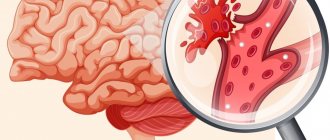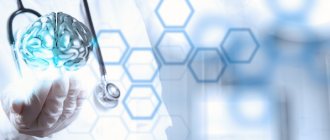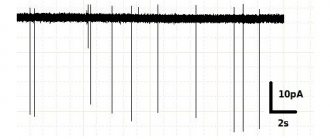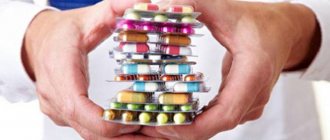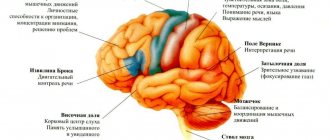The nervous system has a structure consisting of somatic and autonomic components. The first is responsible for motor reactions that arise under the influence of external factors. The vegetative part is involved in the work of internal organs, blood vessels and glands, which is described in scientific articles about VSD and the websites of clinics licensed to treat it.
The autonomic system is usually divided into sympathetic and parasympathetic fragments. The first part is responsible for increasing activity and stimulating metabolism. This leads to increased tissue excitability. The parasympathetic system restores the body and regulates its functions during sleep.
They are distinguished by synchronous recovery. However, under the influence of external conditions, a dominant is formed, and a predominance of a certain department is observed. Mental adaptation is disrupted, the emotional state suffers.
Vegetovascular dystonia (VSD) is a combination of manifestations that appear when there are interruptions in the functioning of the autonomic part of the nervous system. The disease causes various abnormalities in the functioning of internal organs.
This syndrome has different names - neurocirculatory dystonia, autonomic dysregulation, autonomic neurosis, neurasthenia.
Types of vegetative-vascular dystonia (VSD)
Depending on how the cardiovascular system reacts to a disorder of the autonomic nervous system, 4 types of VSD are conventionally distinguished: hypertensive, hypotonic, cardiac and mixed. A more detailed study of the signs of vegetative-vascular dystonia made it possible to identify 3 more types of disorder: vagotonia, cerebral-type VSD and somatoform dysfunction.
This typology is outdated, however, it allows you to classify all symptoms of VSD. The problem of diagnosing autonomic dysfunction is acute, and patients often become victims of ignorance or inattention of doctors. Let's figure out what symptoms may indicate the presence of one or another form of autonomic dysfunction.
Symptoms
The symptoms of neurocirculatory dystonia are very diverse and form the basis for the classification of pathology. However, it is possible to identify a number of common features that are characteristic of most types of NDC:
- frequent mood changes;
- constant fatigue and drowsiness;
- lack of strength, weakness;
- feeling of a lump in the throat;
- increased sweating;
- weather sensitivity;
- anxiety;
- feeling of lack of air, etc.
An exacerbation of the disease can be triggered by any stressful situation: an excess of positive or negative emotions, lack of sleep, or even a simple change in time zones.
VSD of cardiac type
In the cardiological (as well as in the hypertensive) form of autonomic dysfunction, the diagnosis will most likely show obvious sympathicotonia, that is, functional tension in the work of the sympathetic department of the ANS. A distinctive feature of VSD of the cardiac type is pain in the heart area (stabbing, pressing or burning sensations in the chest area). Signs may resemble those of an angina attack or myocardial infarction. But upon examination, cardiac pathologies are not detected.
The cardiac type of reaction to a vegetative-vascular disorder is characterized by: tachycardia, cardiac arrhythmia, false pain in the heart area, as well as respiratory arrhythmia and asthma attacks. It is important to understand that with VSD, pain in the heart area is not a harbinger of a heart attack and does not in any way affect the cardiovascular system, which will be confirmed by the patient’s echocardiogram. Cardiac rhythmography is very effective in diagnosing this type of VSD.
Treatment
Therapy for vegetative-vascular dystonia begins with a visit to a psychotherapist and lifestyle changes.
Medicines are used exclusively in complex treatment. The drug and dosage are determined by doctors at the Yusupov Hospital after examining the patient. For VSD, neurologists prescribe the following medications:
- antidepressants;
- sedatives;
- tranquilizers;
- nootropic drugs.
Antidepressants are necessary to get rid of the manifestations of depressive conditions that are observed with vegetative-vascular dystonia.
Medicines quickly relieve anxiety and depression, improve sleep quality and increase appetite. For vegetative dystonia, antidepressants are prescribed first, since eliminating depression simultaneously reduces other manifestations of VSD. With prolonged use, the drugs are addictive. Antidepressants cause side effects that include various disorders of the central nervous system, increased sweating, heart rhythm disturbances and nausea. Doctors at the Yusupov Hospital are careful when choosing a drug for the treatment of VSD. The most harmless and effective antidepressants are azafen, deprim, cipralex. Sedatives reduce anxiety. In the treatment of VSD, drugs based on medicinal herbs, barbiturates, bromine and magnesium preparations are used. Herbal remedies are considered the safest, since they have minor side effects and do not have significant contraindications. For VSD, neurologists use drugs based on valerian extract (Novo-Passit, Dormiplant, Persen) and hawthorn (Kralal, Fitosed). Barbiturates have significant side effects. They can be addictive, and if the dosage is slightly exceeded, they can lead to poisoning. The safest drugs in this group are Corvalol, Barboval, Valocordin. They are prescribed for the cardiac form of VSD.
Tranquilizers are effective medications that provide a quick but short-term sedative effect. They relieve feelings of fear, worry, anxiety, and relieve emotional stress. Drugs of this pharmacological group are not prescribed during pregnancy and weakened immunity, children and mental patients. VSD therapy is carried out with gentle medications with a gradual transition to more powerful drugs. To treat VSD, doctors use diazepam, nozepam, oxazepam, seduxen, and elenium.
Nootropic drugs include drugs that affect certain brain functions:
- activate mental activity;
- improve memory;
- increase learning abilities.
The use of drugs in this group relieves patients with VSD from weakness and apathy, promotes clarity of consciousness, and eliminates psychomotor retardation. Nootropics have mild side effects and low toxicity. Most often, doctors prescribe glycine, phenibut, piracetam, nootropil, and fezam for VSD.
VSD of mixed type
Depending on how the cardiovascular system reacts to a disorder of the autonomic nervous system, the 3 types of VSD described above are conventionally distinguished. But, as a rule, vegetative-vascular dystonia includes several types of symptoms at once.
The mixed type is characterized by a combination of the above symptoms. Blood pressure “jumps”, a person feels sometimes depressed, sometimes irritated, sometimes experiences weakness, sometimes excessive emotional overexcitation, and his mood changes sharply. With a mixed type of VSD, the whole spectrum of symptoms can manifest itself: cardiac and respiratory arrhythmia, panic attacks, pain with vague localization. This type of autonomic disorder is the most common.
Causes
Vegetative-vascular dystonia affects various systems and organs. Symptoms may appear already in fetal development. It has been proven that the largest number of diagnosed cases are detected between the ages of 20 and 40 years. Among the main reasons for the development of VSD are the following:
- hereditary burden;
- physiological features of the structure of the body;
- psycho-emotional or physical stress;
- hormonal instability;
- chronic somatic pathologies;
- history of traumatic brain injury.
Doctors at the Yusupov Hospital quickly identify the causes of the development of vegetative-vascular dystonia.
In accordance with the identified etiological factors, a treatment program is developed. Make an appointment
VSD of vagotonic type
Vagotonia is characterized by a wide variety of symptoms, which can raise suspicion of serious diseases of the heart, endocrine or respiratory system, diseases of the gastrointestinal tract or even the psyche. A thorough examination does not reveal any pathologies in the organs and systems of the body. And as a “diagnosis of exclusion,” the patient is diagnosed with “VVD of the vagotonic type.” Indeed, a variety of symptoms that do not fit into a single pathological process are caused by vagotonia - hypertonicity of the vagus nerve (“vagus”). The vagus nerve regulates the activity of organs, glands and blood vessels, and an increase in its tone causes spasm of smooth muscles throughout all structures of the body.
With this type of VSD, the activity of the parasympathetic part of the nervous system predominates (over the sympathetic), which will be confirmed by the diagnosis of CRH. A person becomes apathetic, unsure of himself, suspicious, suffers from hypochondria, suspecting that he has the most terrible and, perhaps, still unknown disease. Memory for specific things often deteriorates: numbers, dates, details, and mental activity decreases.
Physical symptoms are bradycardia, hypotension, vestibular disorders (dizziness and fainting), fatigue, shortness of breath, pale skin, cold extremities, non-localized pain in the abdomen and chest. Despite the broken state, the person experiences difficulty falling asleep and does not sleep well during the night. In advanced cases, patients experience panic attacks, depression and suicidal tendencies. Symptoms can appear in a complex manner, or they can be localized - when complaints are limited to one of the organ systems. The disease can be chronic or manifest itself in the form of outbreaks, vegetative crises, when the condition sharply worsens. In vagotonic children, the pathology also manifests itself in an abundance of allergic reactions.
Prevention
Prevention of NCD is important not only for healthy people who are at risk, but also for those who are already closely confronted with this pathology. Changing your lifestyle, adjusting your diet and physical activity help strengthen the body and significantly reduce the risk of unpleasant symptoms. Doctors recommend adhering to the following rules:
- eliminate overtime, ensure daily proper rest;
- create the most peaceful atmosphere at home and at work;
- go to bed on time (duration of sleep at night is 8 hours or more);
- do not ignore walks in the fresh air;
- choose a suitable sport that will allow you to practice for your pleasure (swimming, walking, cycling, yoga, Pilates, etc.);
- adjust nutrition: the daily diet must meet the standards for caloric content, the ratio of dietary fat, the content of vitamins and microelements;
- minimize the consumption of food stimulants: tea, coffee, fatty foods, smoked foods, alcoholic drinks;
- drink at least 2 liters of clean water daily (other drinks do not count).
Compliance with these rules is useful for the prevention of not only neurocirculatory dystonia, but also many other diseases. The body always responds gratefully to care for it and begins to cope much better with inevitable stress and physical activity.
VSD of cerebral type
With vegetative-vascular dystonia of the cerebral type, the tone of the blood vessels in the brain is disturbed. The blood vessels spasm, which leads to disruption of blood supply and nutrition to the brain. Cells lack oxygen, and blood flow deteriorates.
The primary symptoms are headaches, dizziness, blurred vision, noise and pounding in the ears, and nausea. Other symptoms of VSD may also appear: pain in the heart, tachycardia, vascular instability (bouts of heat, sweating, pale skin), difficulty breathing, shortness of breath and a number of other symptoms. According to cardiac rhythmography data, VSD of the cerebral type will be expressed by hyperactivity of waves from the autonomic centers of the brain and, possibly, sympathetic waves.
Complications
NCD is not an independent disease, but it can cause the development of dangerous conditions. In severe dystonia and lack of adequate therapy, it can cause:
- myocardial infarction;
- ischemic or hemorrhagic stroke;
- cholelithiasis and urolithiasis;
- diabetes mellitus;
- arterial hypertension that does not respond to classical treatment regimens.
Malfunctions of the ANS also affect the immune system. Resistance to infections with this pathology is significantly reduced.
Somatoform dysfunction
With somatoform dysfunction, a person usually complains about a specific organ or group of organs that are regulated by the autonomic nervous system. These may be complaints about the cardiovascular, gastrointestinal, respiratory or genitourinary systems. The patient associates his condition with a physical disorder, but based on the results of the examination, the doctor finds no reason for it. The true cause of the malaise is a disruption in the functioning of the autonomic nerve centers. In addition to subjective localized pain, heaviness, burning or tension, specific symptoms of VSD can be easily identified among the patient’s complaints.
The variety of symptoms of autonomic dysfunction makes it difficult for the doctor to get to the root cause of the disease. Therefore, in addition to collecting anamnesis, it is important to conduct instrumental studies of the functioning of the autonomic nervous system. Find out more about diagnosing autonomic disorders.
Diagnostics
Vegetative-vascular dystonia has various clinical manifestations. In this regard, it is necessary to carefully carry out diagnostics to differentiate pathological conditions. The main research methods include:
- clinical blood test;
- biochemical blood test;
- general urine analysis;
- blood for thyroid hormones;
- rheoencephalography;
- ECG;
- EchoCG;
- 24-hour Holter monitoring;
- MRI.
Doctors at the Yusupov Hospital use modern equipment. With their help, it is possible to establish the causes of vegetative-vascular dystonia in the shortest possible time. Experienced specialists select effective treatment aimed at eliminating the symptoms of the pathological condition.
Advantages of the clinic
The Health Energy Clinic uses an integrated approach to solving any patient’s medical problems. We offer the most complete range of services, including:
- consultations with narrow specialists, including obtaining the opinion of a foreign doctor remotely;
- all types of tests and diagnostic procedures;
- modern treatment regimens compiled on an individual basis;
- issuance of certificates and conclusions.
A healthy person can choose one of the comprehensive check-up diagnostic programs to identify hidden pathologies.
Neurocirculatory dystonia is a disease that is not recognized by all doctors, but its symptoms do not disappear. Don’t let disruptions in the nervous system ruin your life, sign up for diagnostics and treatment at the Energy of Health neurology clinic.


